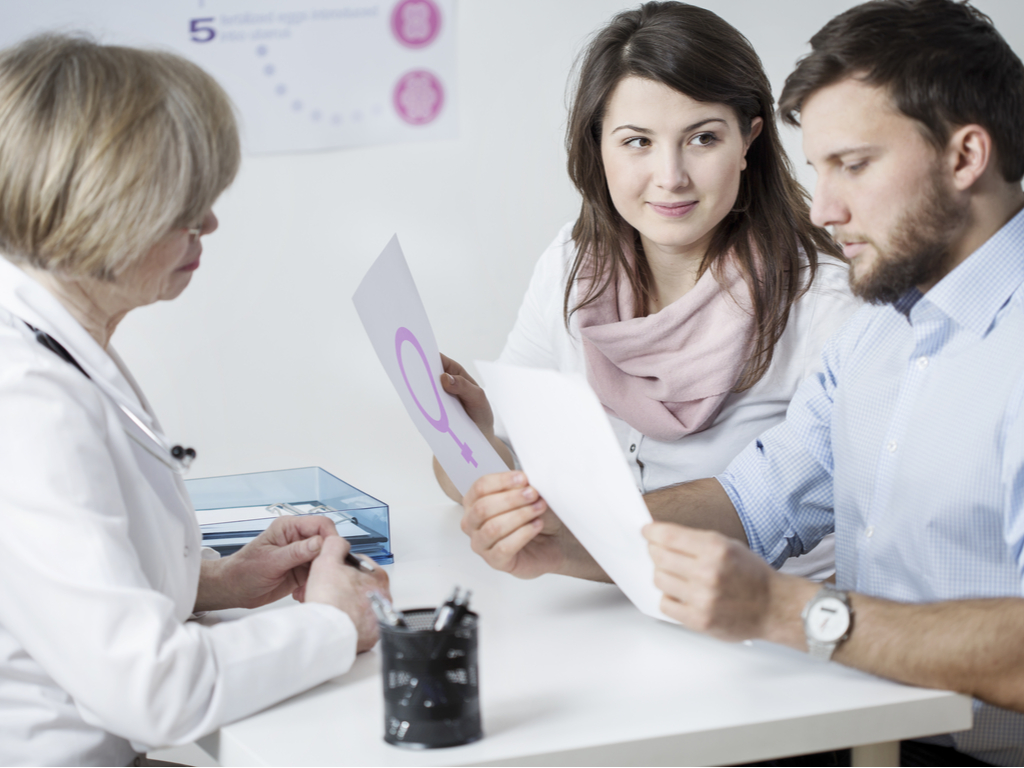IVF was first pioneered in 1978 and has been advancing in medical knowledge and technology ever since. One of the safest and most successful forms of assisted reproductive technologies, IVF has helped millions of families. However, it is important to keep in mind that every medical procedure does have potential risks, including IVF. At Hart Fertility Clinic, we believe that it is important to fully inform our patients before they make the decision to pursue IVF.
Throughout the entirety of the procedure, your doctor will make every effort to induce as little pain and discomfort as possible. However, there are potential risks during egg retrieval of infection and possible damage to the bladder or bowels. There are also a handful of possible side effects to be aware of.
Some mild side effects may include:
- Discharge that is clear or slightly blood tinged
- Mood swings
- Cramping
- Breast tenderness
- Bloating
- Constipation
If you experience any sharp pains, fever, or prolonged bleeding, you should reach out to your doctor right away. Following the IVF procedure, there have been extremely rare cases of infection, ovarian torsion or the twisting of the ovary, and severe ovarian hyperstimulation syndrome (OHSS). If you do find that you are pregnant, there may be a slightly higher rate of increased blood pressure, preeclampsia, ectopic pregnancy, miscarriage, and birth defects.
Some of our patients have come to our clinic with a known medical history of complex fertility-related conditions; it’s always best to discuss these and other factors with your doctor entirely before proceeding with IVF. Our doctors have extensive experience and are highly qualified to make the necessary adjustments to our patients’ treatment processes to identify and account for their conditions.
Whatever your situation, the Hart Fertility Clinic team is here to help - call us today to schedule a consultation with our fertility doctors.
For those who dream of having their own family, infertility can be heartbreaking. You’ll want to know what options you have, the rate of successful pregnancy and live birth, and which treatments are safest for mother and baby. In-vitro fertilization, also known as IVF, is the process of introducing the egg and sperm in a controlled environment to help ensure fertilization.
While in-vitro fertilization is an option for those who want to start a family and to carry the child to term themselves, it’s best to discuss the options with your doctor. IVF is intended to help those who have blocked, damaged or removed fallopian tubes, as well as ovarian disorders, genetic disorders, or otherwise unexplained and unspecified infertility. This method is also useful for couples who are experiencing male factor infertility due to decreased sperm count or mobility. If your doctor feels that IVF is a viable option for you and your family, they may be able to recommend specialists in your area to help get you started with the process.
Before the Procedure
IVF treatments have a few overarching steps that most treatment processes have, although the details may vary slightly depending on the doctor’s recommendation due to the patient’s unique situation.
Consultation with your Doctor
If you are considering IVF, here are a few questions to consider asking your doctor before beginning the process.
- How many embryos will be transferred?
- Should we create a plan for a multiple pregnancy?
- Should the extra embryos be saved?
- Will there be genetic testing done?
- What will our course of action be if any of those genetic tests come back positive?
- What will the exact process be for IVF with this facility?
Pre-Procedure Testing
Before the procedure can actually begin, some pretesting is required. A series of blood tests will be done that will be used to assess hormone levels and test for infectious diseases and genetic diseases. A semen analysis may also be ordered to determine which type of insemination method is to be used later. Finally, a uterine exam may also be done to determine the health of the uterus.
The IVF Process
Once all of the pre-procedure tasks are complete, the IVF process may begin. Your doctor will inform you of the steps that you’ll be taking for the procedure. Here is a short introduction to each step in the process to give you an overview of what to expect.
Step One
The process begins with a regimen of fertility medications. Some will help to increase the number of eggs produced and decrease the chances of premature ovulation. Others will prepare the lining of the uterus. Following the start of the medication, transvaginal ultrasounds will be used to examine the ovaries. Blood tests will be done to monitor hormone levels to help determine the best time to harvest eggs and for implantation later on the process.
Step Two
Following the previous testing, a minor medical procedure will be done to retrieve the eggs. The process is usually done with an ultrasound and a hollow needle inserted through the pelvic cavity to get the eggs. While this may be cause some discomfort, medication is provided to help negate or at least lessen the discomfort during the procedure.
Step Three
The sperm sample is procured for the introduction with the egg. If a donor’s sample is used, there will be no need for this step.
Step Four
The egg and sperm are introduced in a sterile environment to encourage fertilization. This process is known as insemination. There are cases when slightly different methods are used in the insemination process. One of these methods is intracytoplasmic sperm injection, or ICSI, where a single sperm is injected directly into the egg. Once cell division has been confirmed, fertilization has taken place. From fertilization, the eggs are known as embryos.
Step Five
About 3 to 5 days following the procedure to the eggs, the embryos are returned to the woman’s uterus via a catheter.
Following the Procedure
Another series of blood tests and often a pregnancy test is taken a few days following the final reinsertion of the embryo. If the procedure is successful, implantation will occur about 6-10 days following the initial retrieval of the egg. The specialist will also recommend that you begin prenatal appointments.
If the procedure results in a negative pregnancy test, medication to help promote ovulation is ceased. Once your next cycle begins, talk to your doctor about other treatments and avenues to further increase your chances of future success.
Women’s health, from regular check-ups to childbirth, should be a priority. Learning how to prevent problems and maintain a healthy way of life can stop problems before they start!
The goal of this blog is to inform our patients on how to keep themselves healthy. We’ll provide the tools, products and technologies you need for a happier life!
Check back regularly for updates! If you’d like to subscribe to our blog, just use the ‘Subscribe to Our RSS Feed’ link at the top of the blog page with your favorite RSS reader. And, as always, feel free to contact our office with any questions or concerns.






